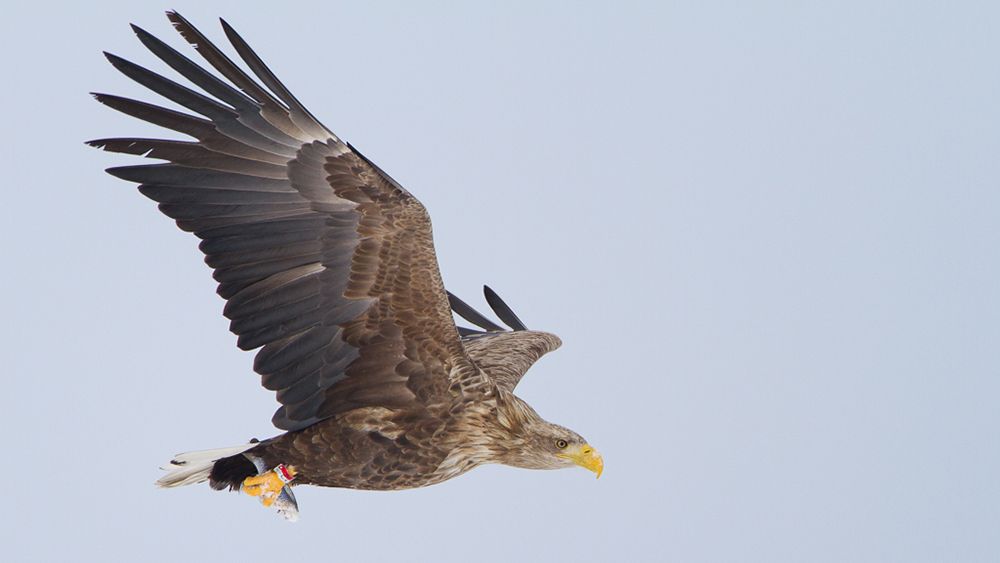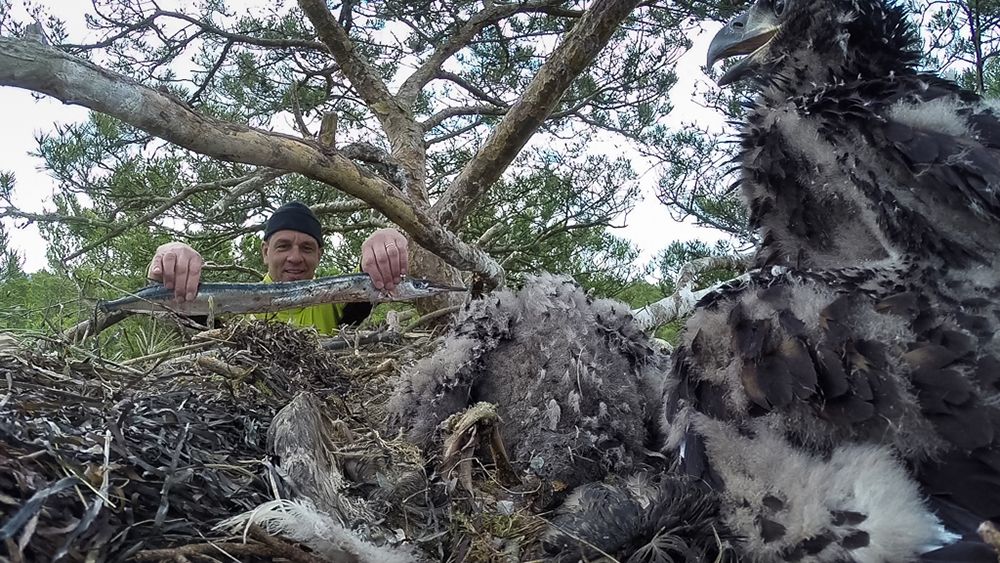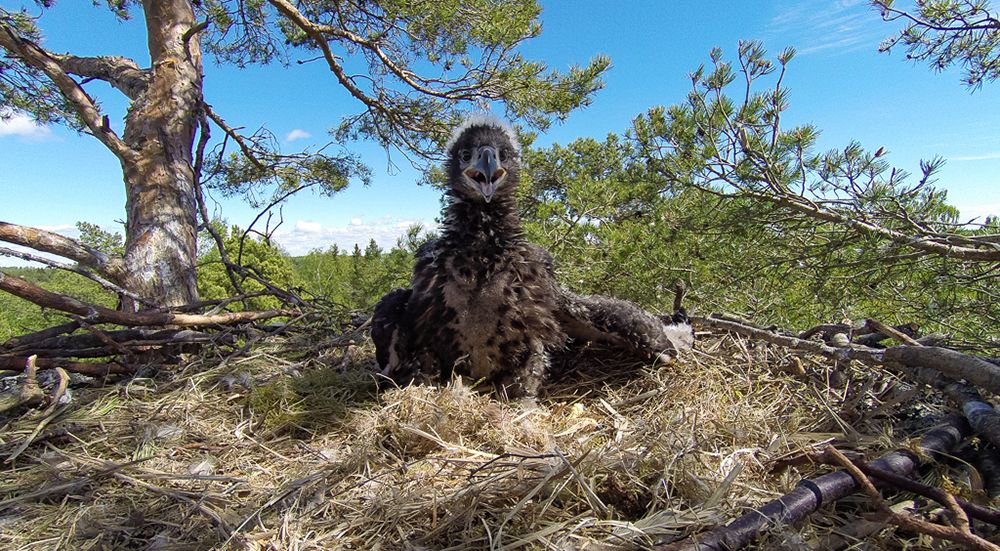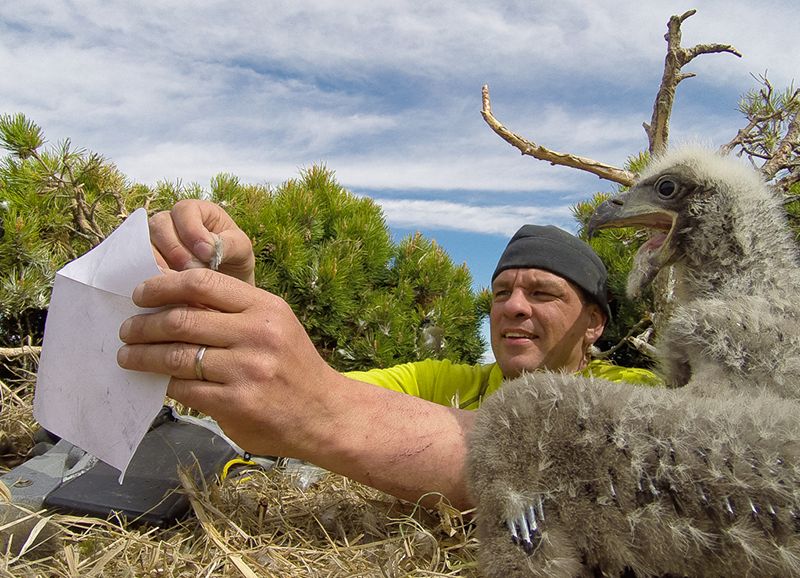With slow strokes of wings, a large bird raises to the sky. A white tail and bright yellow beak can be seen in the sunlight. The white-tailed eagle carries a big fish, raises its altitude and heads away. An angry common gull hurries after it, shrieking as it goes. With determined strokes of wings, the eagle disappears from sight. The whole event is quickly over. The white-tailed eagle is a timid bird; seeing one up close is rare, seeing one hunting even more so.
Nowadays the white-tailed eagle is a prominent bird of prey on the shores of the Baltic Sea and the archipelago, and white-tailed eagles can also be seen in the lake districts and Lapland. This has not always been the case. In the 1960s and 1970s, the white-tailed eagle population of the Baltic Sea was on the brink of extinction. Saving the eagle is one of the great achievements of nature conservation and the work of the dozens of volunteers has played a big part in it. As the apex predator, the white-tailed eagle is one of the monitored bird species in the Baltic Sea area and its nesting is also followed closely. Today, the Finnish Osprey Foundation’s white-tailed eagle committee directs and coordinates the white-tailed eagle conversion, monitoring and research in Finland, and over a hundred bird enthusiasts participate in the work. Every year, the volunteers check over a thousand inhabited nests and secondary nests of white-tailed eagles. They also look for new nests. The information is reported to the database of the Finnish Museum of Natural History, where they are available to the authorities, researchers and forestry and land use planners who need them.
As a top predator, white-tailed eagle is an important indicator for the state of the environment. The recovery of the white-tailed eagle population has caused changes in the ecosystem; the common eider and some other species have had to adjust to the new situation. Due to the central role of the white-tailed eagle, HELCOM (Helsinki Commission) has named the white-tailed eagle as one of the indicator species of the Baltic Sea. Monitoring these species makes detecting concerning changes early possible.
At the moment, the Finnish white-tailed eagle population is strong and there is no singular factor in the horizon that would pull the species back to the brink of extinction where it was in the 1960s and 1970s. However, the increasingly comprehensive use of land and the utilisation of forests and shores has decreased the amount of peaceful nesting forests that have the large, strong-branched trees the white-tailed eagle requires. At the same time, the acutely poisonous and harmful chemicals that collect in their bodies lie in wait for the species at the top of the food chain. The insidious threat of DDT and PCB compounds has been known, but now lead has joined this harmful group. In the 2010s, it was proved that the lead in the food the white-tailed eagles ingest and unwittingly collect in their bodies is the leading cause of death for white-tailed eagles. About a third of all white-tailed eagles dies of lead poisoning caused by shots and bullet shards.
Pictures: Hannu Vainiopekka



